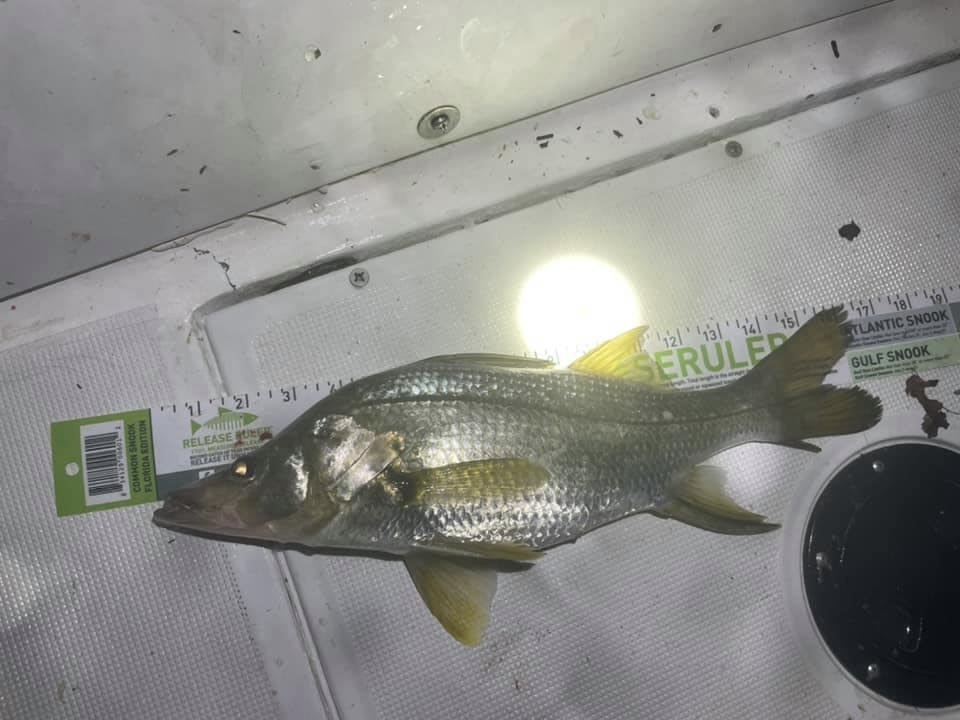Snook Season on the East Coast of Florida: as of 2023 Updates and Regulations
As Snook season on the East Coast of Florida is just over a month away it’s essential to stay informed about the latest rules and regulations set by the Florida Fish and Wildlife Conservation Commission (FWC). These updates are designed to protect the Snook population and ensure sustainable fishing practices for future generations.
New Rules and Regulations for as of January 2023
**Season Dates:**
Closed Season: December 15 – January 31, and June 1 – August 31
**Size Limits:**
- East Coast Snook must measure **not less than 28 inches and not more than 32 inches** in total length to be legally harvested.
West Coast Snook can be 28-33 inches But be sure to check your regions new regulations because they possibly have changed.
**Regional Differences:**
- The FWC has implemented specific regulations for different regions to address local population dynamics and environmental conditions. Be sure to check the exact rules for your fishing location.
**Bag Limits:**
- Typically, the bag limit is one Snook per angler per day. However, it’s crucial to verify the exact limit for your region as it can vary.
1. Common Snook (Centropomus undecimalis)
The common snook is the largest and most prevalent species, making it the primary target for most anglers. These snook can grow to impressive sizes, with some individuals reaching over 50 inches and weighing more than 40 pounds. They are easily recognized by their elongated body, distinct lateral line, and prominent black stripe running from their gills to their tail. common snook typically spawn April through September. Depending on whether and water temperature. Typically can be found in the inlets of intercoastal and shallow water wrecks during spawning season.
The top Snook in the photo above is a large scale, Fat Snook the Smaller fish is a Small scale Fat Snook.
2.Large-Scale Fat Snook (Centropomus mexicanus)
Confirmed as a separate species in 2006, the large-scale fat snook has slightly larger scales and fewer gill rakers compared to the small-scale fat snook. This species can grow up to 30 inches and is found exclusively on Florida's east coast, between Sebastian and Jupiter. This makes Stuart an ideal destination for anglers looking to catch this less common snook. This species of snook is a Late spawner. This is why we have a closure over the fall months. You can typically find these fish and big numbers around the inlets and shallow water, wrecks, and the months of November-February.
3.Small-Scale Fat Snook (Centropomus parallelus)
The small-scale fat snook is noticeably smaller than the common snook, seldom exceeding 24 inches in length. It has a squarish-shaped body covered with smaller scales. A distinctive feature is its bony long anal fins, which protrude past the membrane and stick out like a dagger. This species typically has a bluish top side, adding to its unique appearance this is also a late spawning species and most prevalently found around November through February
4. Tarpon Snook 📸 by Mark Nichols owner of D.O.A. (Centropomus pectinatus)
The tarpon snook is another smaller species, characterized by its squarish body and larger scales compared to the fat snook. Its upturned mouth is similar to that of a tarpon, and it has very large eyes and fewer dorsal fins. The species is also typically less than 25 inches long With a few fish slightly larger. This unique morphology makes the tarpon snook an interesting catch for anglers it also has a different fighting style than the other Fish does crazy jumps and dives more then the other Species.
5. Swordspine Snook (Centropomus ensiferus)
The swordspine snook is the rarest and smallest of the snook species, Typically, less than 20 inches long with very large scales normally larger than your thumbnail distinguished by its disproportionately large anal spine. These snook are typically found in south-central and extreme southern Florida, often in upstream coastal rivers or less saline habitats in upper estuaries. They have also been discovered in Lake Okeechobee and surrounding lakes Close to saltwater.
Where to Find These Snook
The four smaller species of snook are usually found in more secluded and less saline environments. Anglers often seek them out in the upper reaches of the North and South fork of the St.Lucie river and back water estuaries . In contrast, the common snook is more widespread and can be found in various habitats, including coastal waters of the beach and brackish estuaries like the Indian River and St. Lucie River here in Stuart.
For anglers looking to experience the thrill of catching these diverse species, booking a trip to Stuart, Florida, offers a unique opportunity. The region's rich biodiversity and strategic location between Sebastian and Jupiter make it an ideal spot to target the elusive large-scale fat snook and other snook species.
By understanding the different types of snook and their distinct characteristics, you can enhance your fishing experience and appreciation for these remarkable fish!
If you have any questions please call/text
Capt.James Cronk
772-267-0095
www.772FlyAndLightTackleCharters.com









